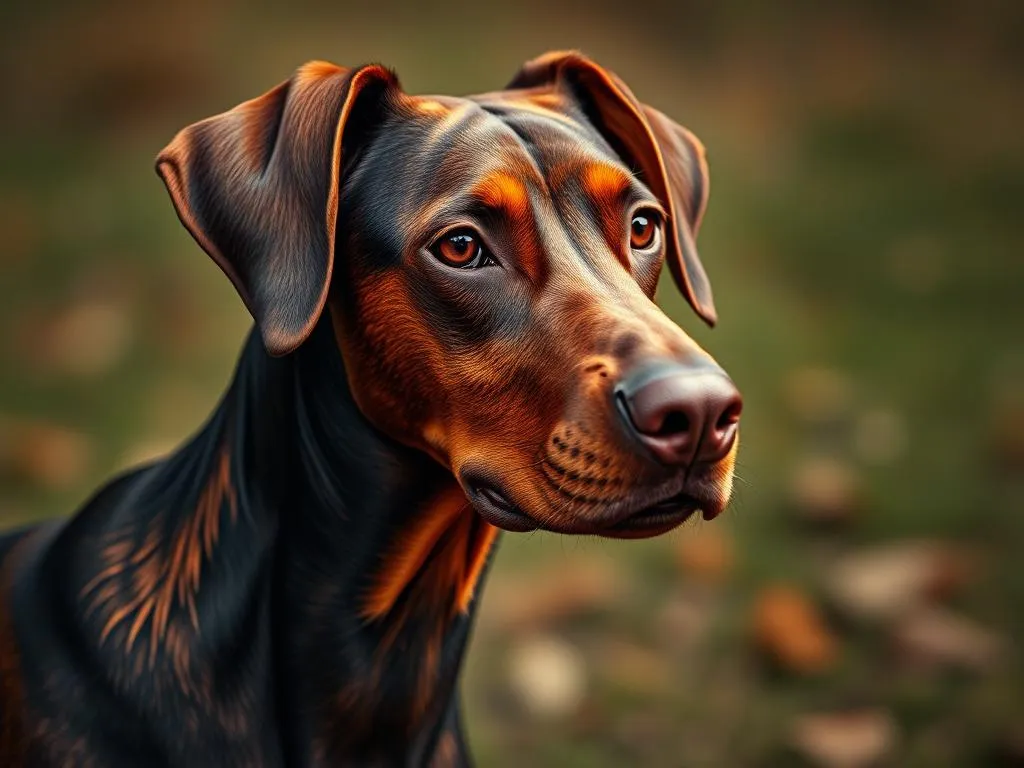
Dog breeds are an essential aspect of the canine world, each with unique characteristics that cater to various lifestyles and needs. Among these breeds, the Doberman stands out for its intelligence, loyalty, and versatility. Known for their sleek appearance and strong protective instincts, Dobermans have become a popular choice for families, service roles, and law enforcement. In particular, the Red Doberman is a striking variation that captures the attention of dog lovers with its unique coloration and personality traits.
In this article, we’ll explore everything you need to know about the Red Doberman, from its history and characteristics to care and training requirements.
Understanding Dog Breeds
What Defines a Dog Breed?
A dog breed is defined by a set of characteristics that include genetics, behavior, and appearance. These traits are often the result of selective breeding, which emphasizes certain features such as size, coat color, and temperament. For instance, breeds like the Doberman are known for their athletic build and protective nature, which have been cultivated over generations.
The Importance of Choosing the Right Dog Breed
Choosing the right dog breed is crucial for ensuring a harmonious relationship between the dog and its owner. Factors such as the dog’s energy levels, grooming needs, and temperament can significantly impact family dynamics and lifestyle. For example, the protective nature of the Red Doberman may suit active households seeking a loyal companion.
Overview of the Doberman Breed
History of the Doberman
The Doberman breed originated in Germany in the late 19th century. Developed by a tax collector named Karl Friedrich Louis Dobermann, the breed was created to serve as a loyal companion and protector. The Doberman quickly gained recognition for its intelligence and versatility, becoming popular in various roles, including police and military service.
Characteristics of Dobermans
Dobermans are medium to large-sized dogs, typically weighing between 60 to 100 pounds. They are known for their short, sleek coat, which can come in various colors, including black and tan, blue, fawn, and the unique red. The breed is characterized by its strong, athletic build, erect ears, and long, tapering tails.
In terms of temperament, Dobermans are intelligent, loyal, and protective. They are known for their ability to bond closely with their families and are often described as affectionate and trainable.
Common Uses of Dobermans
Dobermans are versatile dogs that serve in various roles. They are often employed in law enforcement and security due to their keen sense of smell and protective instincts. Additionally, many Dobermans make loving family pets and are utilized as service dogs, helping individuals with disabilities.
The Red Doberman: Unique Characteristics
What is a Red Doberman?
A Red Doberman is distinguished by its unique red coat, which is a result of a specific genetic variation. This coloration is less common than the traditional black and tan, making the red variant particularly sought after. The red coat can range from a light reddish-brown to a deeper mahogany hue, often accompanied by rust-colored markings.
Genetic Basis of the Red Coloration
The genetic basis for the red coloration in Dobermans involves a recessive gene that affects the pigmentation of the coat. This can lead to some misconceptions about red Dobermans, with some believing they are a separate breed or less desirable. However, they are simply a variation of the Doberman breed, possessing the same traits and characteristics as their more common counterparts.
Physical and Behavioral Traits of Red Dobermans
In terms of appearance, Red Dobermans may exhibit slight differences compared to other colors, particularly in their coat’s hue and sheen. However, their physical and behavioral traits generally align closely with the standard breed characteristics. Red Dobermans tend to be equally intelligent, loyal, and protective, making them excellent companions.
Health Considerations for Red Dobermans
Common Health Issues
Like all breeds, Dobermans are susceptible to certain health issues. Common concerns include hip dysplasia, a genetic condition affecting the hip joints, and dilated cardiomyopathy, a heart condition that can lead to serious complications. While there is no evidence to suggest that red Dobermans face unique health risks, they may still inherit common breed-specific concerns.
Preventative Care and Maintenance
Preventative care is crucial for maintaining the health of a Red Doberman. Regular veterinary check-ups, vaccinations, and health screenings are essential to detect potential issues early. Additionally, a balanced diet and adequate exercise can significantly enhance your dog’s overall well-being.
Training and Socialization
Importance of Early Training
Early training and socialization are vital for all Dobermans, including Red Dobermans. These dogs are highly intelligent and thrive on mental stimulation. Starting training young helps establish good behavior patterns and builds a strong bond between the dog and its owner. Techniques such as positive reinforcement and consistent commands are effective methods for training Dobermans.
Addressing Behavioral Challenges
While generally well-behaved, Dobermans can develop behavioral challenges if not properly trained. Common issues include separation anxiety, excessive barking, and aggression towards unfamiliar people or animals. Addressing these challenges early through training and socialization can prevent them from becoming ingrained behaviors.
Caring for Your Red Doberman
Nutritional Needs
Feeding a Red Doberman a balanced diet is essential for its health and longevity. High-quality dog food that meets the nutritional needs of large breeds is recommended. Ensure that the food contains appropriate levels of protein, fats, and carbohydrates while avoiding fillers and artificial additives. It’s also important to establish a consistent feeding schedule, usually comprising two meals per day.
Exercise Requirements
Dobermans, including red variants, require regular exercise to maintain their physical and mental health. Daily walks, playtime, and activities that engage their minds, such as obedience training or agility courses, are excellent ways to keep them active. A minimum of 60 to 90 minutes of exercise each day is recommended to prevent boredom and destructive behavior.
Grooming and Maintenance
The grooming needs of a Red Doberman are relatively minimal due to its short coat. Regular brushing helps remove loose hair and keeps the coat healthy. Bathing should be done as needed, and attention should be given to maintaining the dog’s ears, nails, and teeth. Regular veterinary visits for dental care and vaccination updates are also essential for overall health.
Conclusion
The Red Doberman is a unique and captivating variation of the Doberman breed. With its striking appearance and loyal temperament, it offers companionship, protection, and love to its owners. Whether you are considering adopting a red Doberman or simply want to learn more, understanding its unique characteristics and care requirements is essential for responsible pet ownership.
FAQs
What is the lifespan of a Red Doberman?
The average lifespan of a Red Doberman is typically between 10 to 12 years, similar to other Doberman colors. Regular veterinary care and a healthy lifestyle can contribute to a longer, healthier life.
Are Red Dobermans more prone to health issues than other colors?
No, Red Dobermans are not inherently more prone to health issues than other colors. They share the same health risks as the entire breed, which can include hip dysplasia and heart conditions.
Can Red Dobermans be trained to be good family pets?
Absolutely! Red Dobermans are known for their intelligence and loyalty, making them excellent family pets when properly trained and socialized from a young age.
What should I look for when buying a Red Doberman puppy?
When purchasing a Red Doberman puppy, look for a reputable breeder who conducts health screenings on parent dogs and provides a clean, safe environment for their puppies. Ensure the breeder is knowledgeable about the breed and can provide documentation for health checks and lineage.









